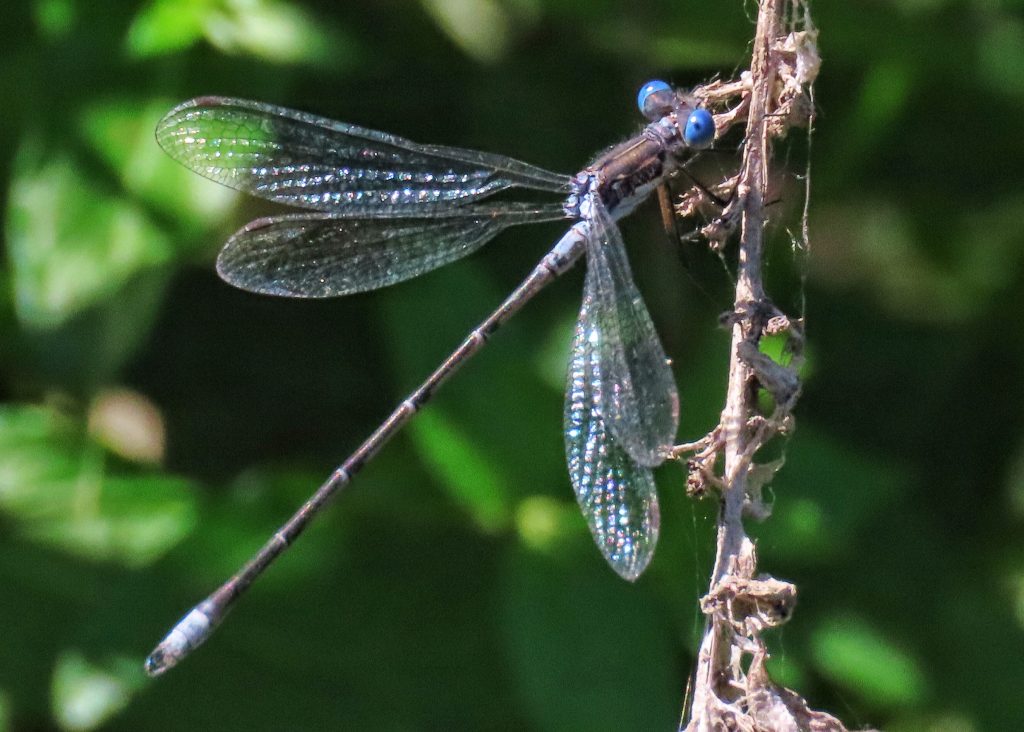
This is a very common medium sized (length 36-42mm) spreadwing damselfly which is found near slow moving or still waters with emergent vegetation. The thoracic pattern is distinct for this species, and is not sexually dimorphic. The mid-dorsal stripe is a dark, sometimes metallic, brown, the antehumeral stripe is narrow and tan, the humeral stripe is black or very dark brown and widens in two sharp steps to the wing base, and the lateral stripes are white with one or two black spots at the edge of the underside of the thorax (the eponymous spots of this species’ common name). The abdomen is dark, metallic brown above, and tan on the ventral side. The males have blue eyes and pruinosity on the first two abdominal segments (S1, S2) and the last three abdominal segments (S8,S9,S10); the females have brown eyes and no pruinosity.
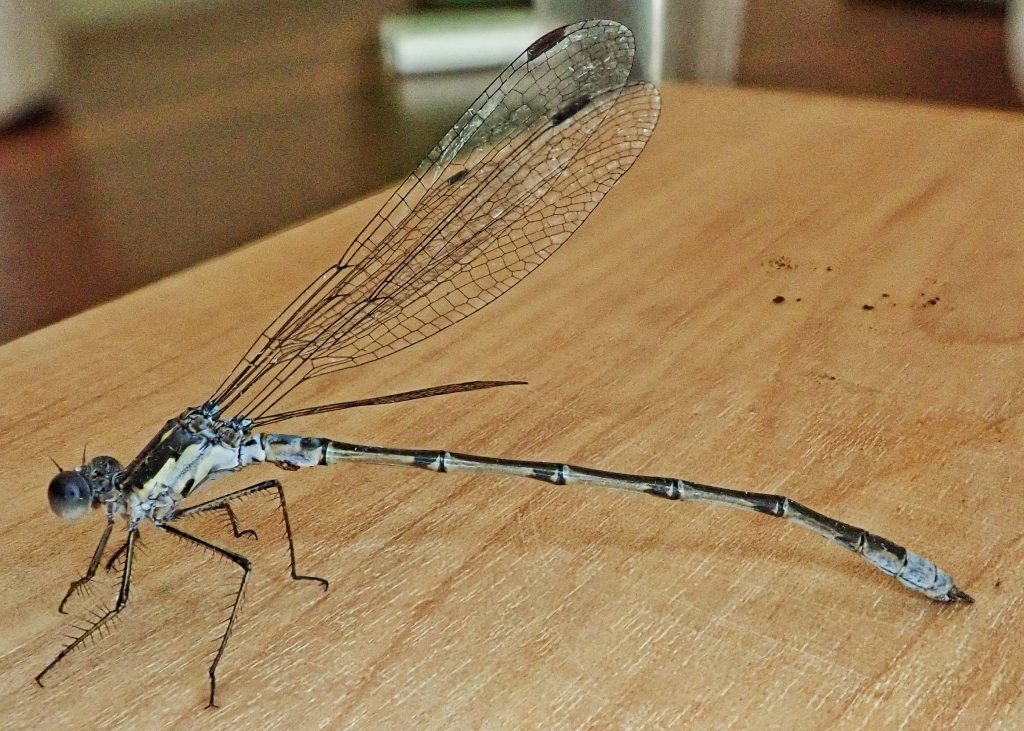
Lestes forcipatus (Sweetflag Spreadwing) and L. disjunctus (Northern Spreadwing) may have a single spot near the underside of the thorax, but never two, and they lack the stepped humeral stripe. L. stultus (Black Spreadwing) has the stepped humeral stripe, but no spots.
And if you have one in hand you can examine the abdominal appendages, which they use to grasp the female during mating. In Lestes congener the upper appendages (cerci) are rounded and stout, while the lower appendages (paraprocts) are stubby. To actually use these characteristics to identify odonates you will need comparisons. The two best field guides for our region are “Dragonflies and Damselflies of Oregon “ (Kerst, Gordon; 2011) and “Dragonflies and Damselflies of the West” (Paulson; 2009).
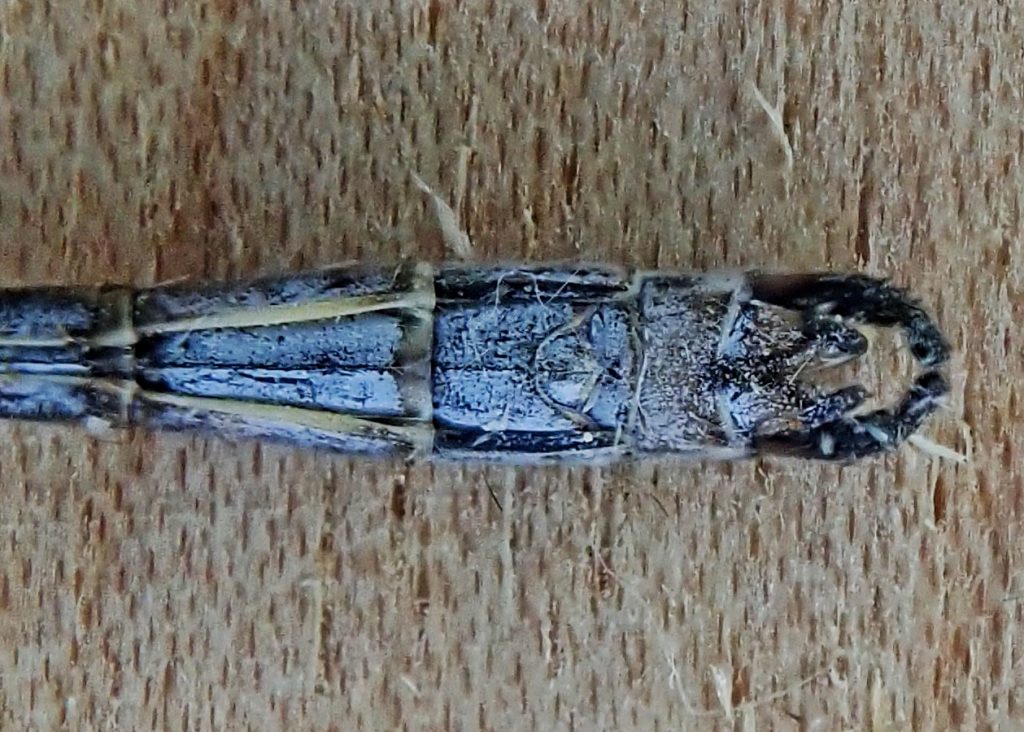
For those of you unfamiliar with the order Odonata (dragonflies and damselflies), a few notes might be useful. Dragonflies are in the suborder Anisoptera. Damselflies are in the suborder Zygoptera. They are most immediately distinguishable from dragonflies by the fact that all four wings of a damselfly are essentially identical, whereas the forewings of dragonflies are noticeably narrower and have different venation than the hindwings. The second obvious characteristic that separates these suborders is that the thorax of damselflies is tipped towards the abdomen, so that their wing bases are vertical and just above the base of the abdomen, which allows the wings to be brought together over the abdomen when the damselfly is at rest. The wing bases of dragonflies are horizontal and dragonflies always rest with their wings perpendicular to their body.
However, just because damselflies can rest their wings along their abdomen doesn’t mean they always do. The spreadwings (family Lestidae), like the subject of this profile, tend to hold their wings spread away from their body when at rest, which is the origin of the common name of this family. They never rest with the wings perpendicular as do dragonflies, and occasionally they will rest them along their abdomen.
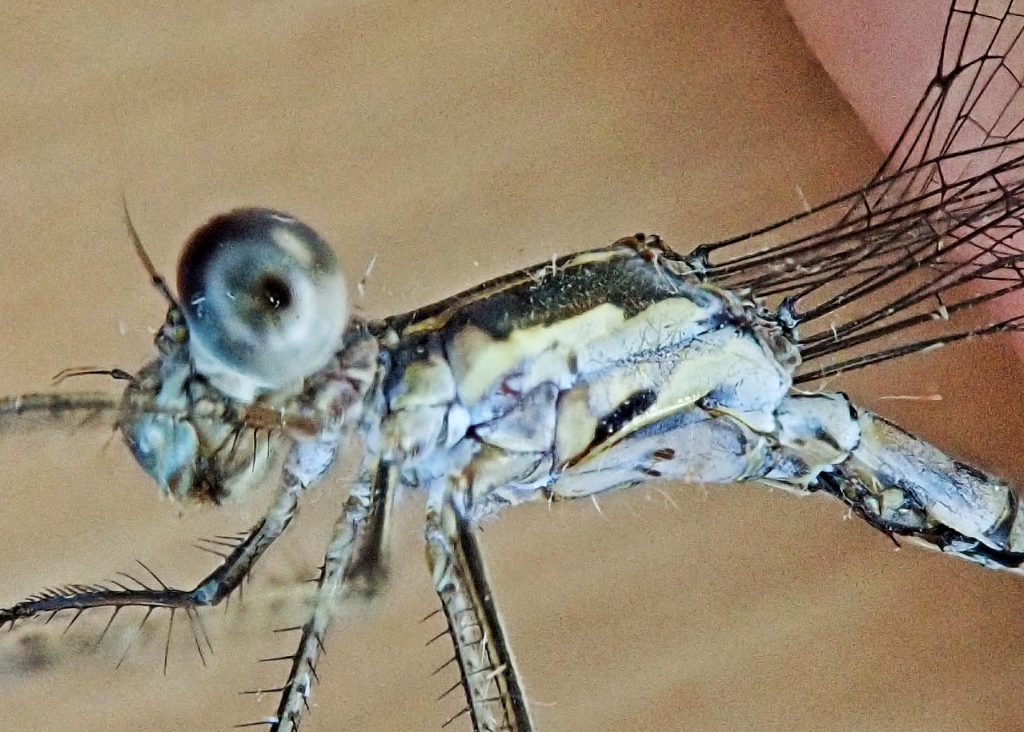
Almost all Odonata spend the bulk of their life as aquatic larvae (and the majority only live a few weeks as adults), and the Spotted Spreadwing is no exception. They capture prey by shooting out a sort of hydraulic lower lip called a labium, and basically they eat any animal smaller that they are. And (no sniggers please) they absorb oxygen through gills located in the rectal chamber, which ‘breathes’ water in and out and can be evacuated rapidly for a burst of jet propulsion.
The adults feed mostly on flies and other small, winged insects. They can be found throughout our region in appropriate habitat, and adults can be found from May to October.
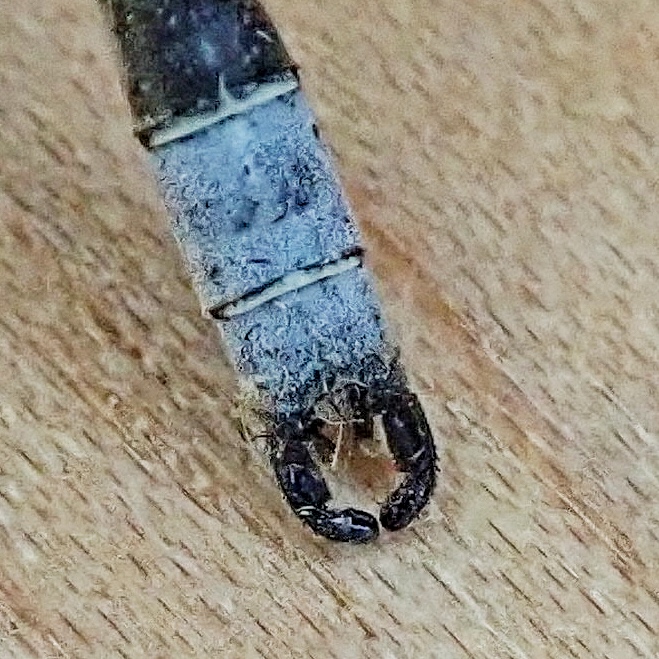
http://nwdragonflier.blogspot.com/2011/11/spotted-spreadwing-lestes-congener.html?m=1
Size- 36-42mm
Habitat- Slow moving and still water with emergent vegetation
Range- Region wide
Eats- Animals smaller than itself
Flight Season- May to October
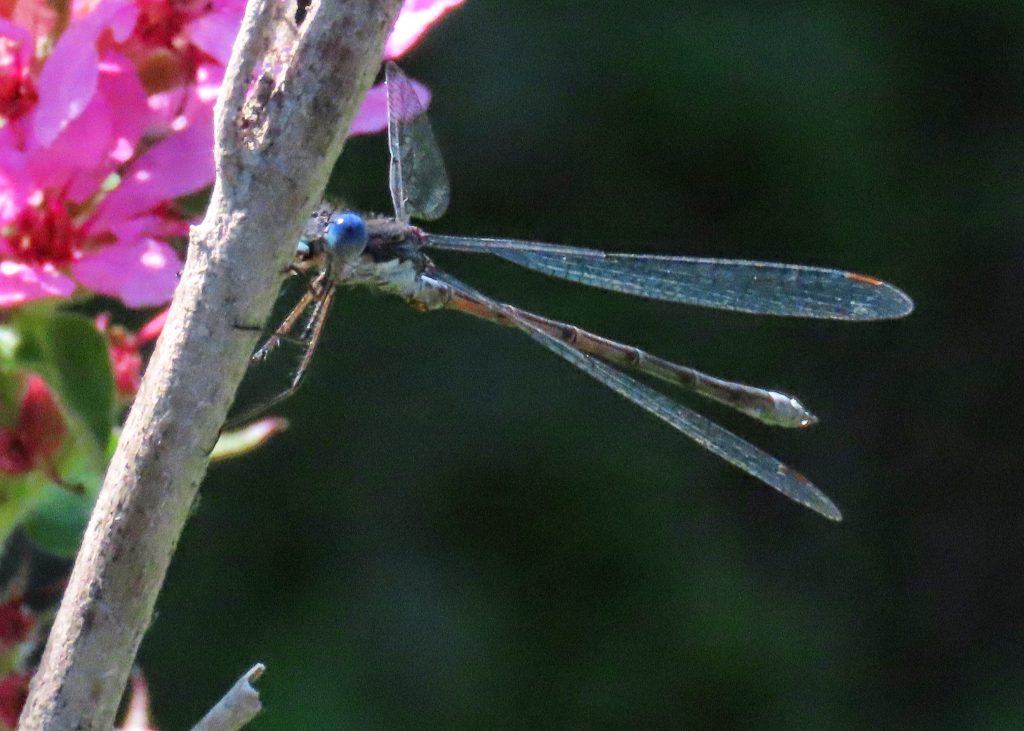
I’ll admit to a few sniggers. Gotta love those abdominal appendages! 😏
I know! Me too😀